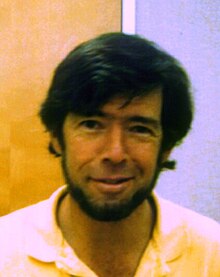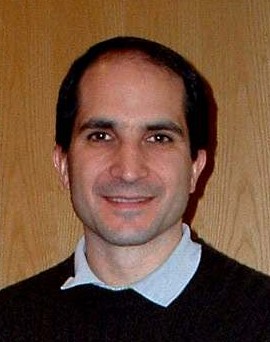
Juan Martín Maldacena is an Argentine theoretical physicist and the Carl P. Feinberg Professor in the School of Natural Sciences at the Institute for Advanced Study, Princeton. He has made significant contributions to the foundations of string theory and quantum gravity. His most famous discovery is the AdS/CFT correspondence, a realization of the holographic principle in string theory.

Leonard Susskind is an American theoretical physicist, Professor of theoretical physics at Stanford University and founding director of the Stanford Institute for Theoretical Physics. His research interests are string theory, quantum field theory, quantum statistical mechanics and quantum cosmology. He is a member of the US National Academy of Sciences, and the American Academy of Arts and Sciences, an associate member of the faculty of Canada's Perimeter Institute for Theoretical Physics, and a distinguished professor of the Korea Institute for Advanced Study.
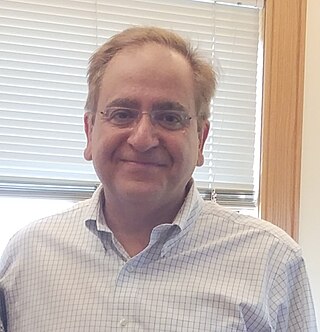
Cumrun Vafa is an Iranian-American theoretical physicist and the Hollis Professor of Mathematics and Natural Philosophy at Harvard University.

David Jonathan Gross is an American theoretical physicist and string theorist. Along with Frank Wilczek and David Politzer, he was awarded the 2004 Nobel Prize in Physics for their discovery of asymptotic freedom. Gross is the Chancellor's Chair Professor of Theoretical Physics at the Kavli Institute for Theoretical Physics (KITP) of the University of California, Santa Barbara (UCSB), and was formerly the KITP director and holder of their Frederick W. Gluck Chair in Theoretical Physics. He is also a faculty member in the UCSB Physics Department and is affiliated with the Institute for Quantum Studies at Chapman University in California. He is a foreign member of the Chinese Academy of Sciences.
Eva Silverstein is an American theoretical physicist, cosmologist, and string theorist. She is a professor of physics at Stanford University and director of the Modern Inflationary Cosmology collaboration within the Simons Foundation Origins of the Universe initiative.
Mark Brian Wise is a Canadian-American theoretical physicist. He has conducted research in elementary particle physics and cosmology. He is best known for his role in the development of heavy quark effective theory (HQET), a mathematical formalism that has allowed physicists to make predictions about otherwise intractable problems in the theory of the strong nuclear interactions. He has also published work on mathematical models for finance and risk assessment.
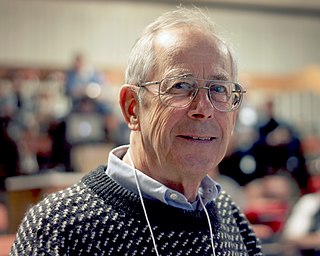
Phillip James Edwin Peebles is a Canadian-American astrophysicist, astronomer, and theoretical cosmologist who was Albert Einstein Professor in Science, emeritus, at Princeton University. He is widely regarded as one of the world's leading theoretical cosmologists in the period since 1970, with major theoretical contributions to primordial nucleosynthesis, dark matter, the cosmic microwave background, and structure formation.
Jeffrey A. Harvey is an American string theorist at the University of Chicago.
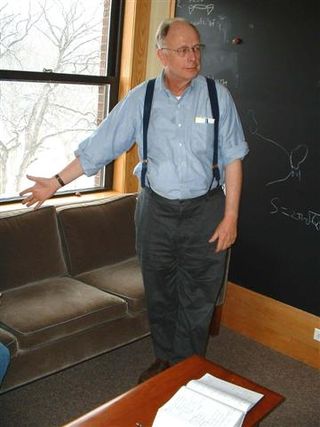
James Burkett Hartle was an American theoretical physicist. He joined the faculty of the University of California, Santa Barbara in 1966, and was a member of the external faculty of the Santa Fe Institute. Hartle is known for his work in general relativity, astrophysics, and interpretation of quantum mechanics.
Sam Bard Treiman was an American theoretical physicist who produced research in the fields of cosmic rays, quantum physics, plasma physics, and gravity physics. He made contributions to the understanding of the weak interaction and he and his students are credited with developing the so-called standard model of elementary particle physics. He was a Higgins professor of physics at Princeton University, a member of the National Academy of Sciences and member of the JASON Defense Advisory Group. He was a student of Enrico Fermi and John Alexander Simpson Jr. Treiman published articles on quantum mechanics, plasmas, gravity theory, condensed matter and the history of physics.
Igor R. Klebanov is an American theoretical physicist. Since 1989, he has been a faculty member at Princeton University where he is currently a Eugene Higgins Professor of Physics and the director of the Princeton Center for Theoretical Science. In 2016, he was elected to the National Academy of Sciences. Since 2022, he is the director of the Simons Collaboration on Confinement and QCD Strings.

François, Baron Englert is a Belgian theoretical physicist and 2013 Nobel Prize laureate.
Itzhak Bars is a theoretical physicist at the University of Southern California in Los Angeles.

Gregory W. Moore is an American theoretical physicist who specializes in mathematical physics and string theory. Moore is a professor in the Physics and Astronomy Department of Rutgers University and a member of the University's High Energy Theory group.
Nikita Alexandrovich Nekrasov is a Russian mathematical and theoretical physicist at the Simons Center for Geometry and Physics and C.N.Yang Institute for Theoretical Physics at Stony Brook University in New York, and a Professor of the Russian Academy of Sciences.
Roger Frederick Dashen was an American theoretical physicist who studied particle physics and quantum field theory.
Michael Dine is an American theoretical physicist, specializing in elementary particle physics, supersymmetry, string theory, and physics beyond the Standard Model.

Atish Dabholkar is an Indian theoretical physicist. He is currently the Director of the Abdus Salam International Centre for Theoretical Physics (ICTP) with the rank of Assistant Director-General, UNESCO. Prior to that, he was head of ICTP's High Energy, Cosmology and Astroparticle Physics section, and also Directeur de Recherche at the Centre National de la Recherche Scientifique (CNRS) at Sorbonne University in the "Laboratoire de Physique Théorique et Hautes Énergies" (LPTHE).

Valery Anatolyevich Rubakov was a Russian theoretical physicist. His scientific interests included quantum field theory, elementary particle physics, and cosmology.

Vijay Balasubramanian is a theoretical physicist and the Cathy and Marc Lasry Professor of Physics and Astronomy at the University of Pennsylvania. He has conducted research in string theory, quantum field theory, and biophysics. He has also worked on problems in statistical inference and machine learning.
